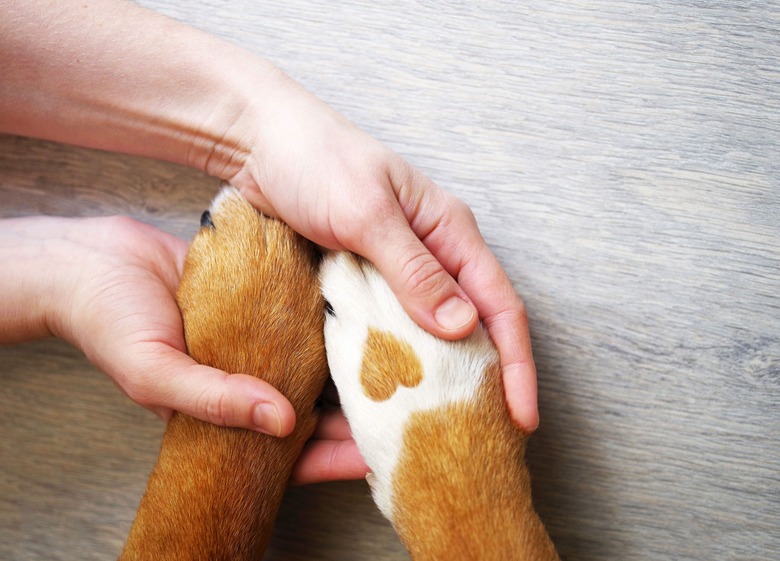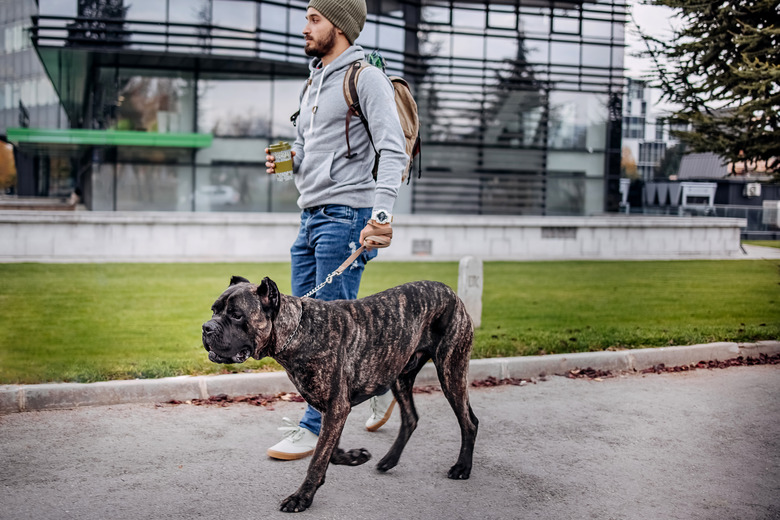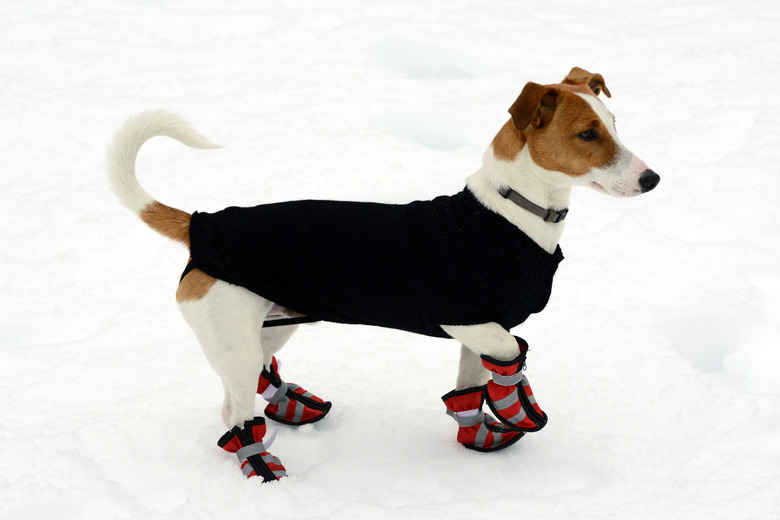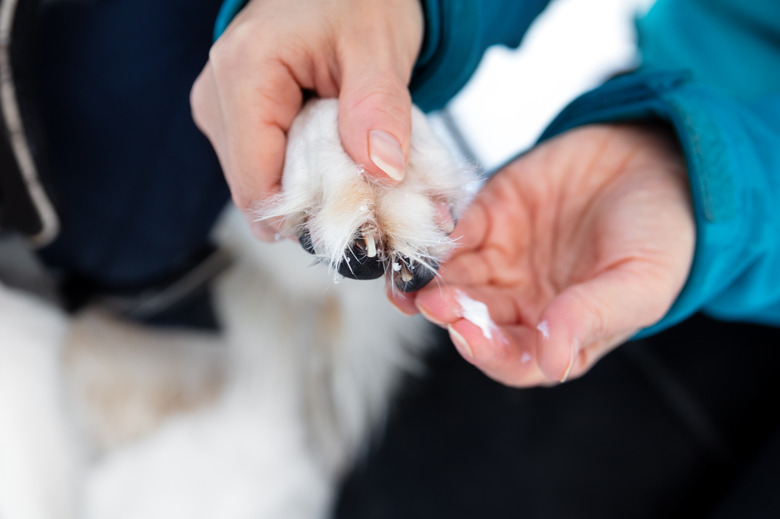Dog Paw Pad Peeling: Causes And Treatment Of Peeling Paw Pads
On a walk, you notice that your dog is stepping more gingerly or is limping rather than bounding along like their usual rambunctious self. When you get home, you notice that the bottom of their paws looks raw, and some of the skin has started to peel back. Dog paw pad peeling can be caused by an injury or a medical condition. Dog paw pad peeling can be very painful, so you should schedule a vet visit.
Symptoms of dog paw pad injuries
Symptoms of dog paw pad injuries
A dog's paw pads cover the bottom of their feet and include pigmented skin and the fat pads beneath it that cushion them from cold. Regardless of the time of year, the pads can be subjected to a variety of hazards while outdoors that can lead to them peeling. If you notice any of the following signs, it is likely that your dog has a paw pad injury, and they should be seen by a veterinarian as soon as possible:
- Limping or "toe touching"
- Peeling, blistered, or broken skin on paw pads or between toes
- Reluctance to walk or run
- Bleeding from the paw
- Oozing pus or other liquid from the paw
- Excessive licking or chewing of the paw
- Reactive when paw is touched
- Glass, splinters, or other material visibly stuck in the paw pad
What causes a dog's paw pads to peel?
What causes a dog's paw pads to peel?
Dog paw pad peeling can have a variety of causes. If you do notice that your dog is having paw pad issues, consider the season, your dog's environment, and any concurrent health issues when trying to pinpoint the culprit.
Burns and chemical exposure in dog paws
A common cause in the case of winter weather, is the spread of ice-melt chemicals, which can lead to chemical burns that may cause peeling. And in the summer, sidewalks in the sun can heat up rapidly. Even at just 77 degrees Fahrenheit, the sidewalk temperature can rise to 125 degrees. Artificial turf can also cause burns. To test a surface to see if it's too hot for your dog, hold your hand on it for about seven seconds. Treat your dog like you would treat yourself. If it's painful for you, it will be painful for your dog.
Abrasions and foreign objects in a dog's paw
Unlike you, your dog is going barefoot on their daily walks. They might step on a piece of glass or other sharp object that could cut the skin on the pad and cause it to peel. Or they may be running along a rough surface and come to a screeching stop to sniff something, causing an abrasion on their paw. Using dog boots in winter weather or hot weather, or on sharp walking surfaces can help with some of the common reasons why a dog's paw pads start to peel.
Allergies and illnesses that affect dog paws
Sometimes, canines who are allergic to their dog food or environmental factors will get itchy feet. After exposure to an allergen, these dogs will lick and gnaw at their paws to try to relieve the itch, which can result in redness, cracking, and peeling. Simple dry skin or excessive licking for any reason can also cause paw pad peeling.
Dog paw pad peeling can also be caused by zinc deficiency and liver disease. An autoimmune disease called pemphigus causes pus-filled blisters that can burst, sometimes causing paw pads to crust over and peel. A rarer disorder called hard pad disease can occur following distemper. This condition causes pain, cracking, and sometimes peeling. These diseases need to be treated by a veterinarian. There is no appropriate home care to address these ailments.
Treatment for a dog's peeling paw pads
Treatment for a dog's peeling paw pads
Treatment for a dog's peeling paw pads will most likely require a trip to the veterinarian, but in the meantime, you can apply some first aid to help ease your pet's discomfort.
If your dog scrapes their paw, inspect it as soon as possible. Remove any glass, shards of metal, or other objects that have caused the tear in the paw pad. If they're hard to dislodge, try gently spraying warm water on the paw or soaking it. Disinfect the area around the peeling dog foot pads with antibacterial soap. If material causing the injury is embedded deeply or your dog's paw won't stop bleeding within 15 minutes, a prompt trip to the veterinarian is in order. Without proper treatment, embedded material is not only painful but it can lead to bacterial infections.
For cuts, abrasions, or peeling paw pads, you can apply antibiotic ointment, such as Neosporin (just observe your dog to make sure they don't lick it off). Bandaging the paw is also an option for home first aid, but this can be difficult to do correctly. Bandages need to be applied tight enough to stay on but loose enough to allow proper blood flow, and they need to be changed daily. If at all possible, this is a job best left to your veterinarian. If you do choose to bandage your dog's peeling paw pad on your own, keep a close eye on it and visit your veterinarian if the peeling does not begin to resolve within a day or two.
Preventing dog paw pad peeling
Preventing dog paw pad peeling
Avoiding triggers for peeling paw pads can make life simpler for you and less painful for your dog. Some dogs will tolerate wearing booties on their feet when outside. If your dog is prone to paw issues, another preventive method is applying wax paw balm, which will provide a barrier between the skin of their pads and the ground. It can also act as a moisturizer for dry paws. To avoid injuries, keep a lookout for sharp objects in your yard or as you go for a dog walk. Avoid rough terrain, hot surfaces, and surfaces that are covered in ice-melt substances.
The bottom line
The bottom line
Dog paw pad peeling can be extremely uncomfortable for dogs and stressful for pet parents. There are many possible causes for paw pad issues in canines, from burns caused by ice-melting sidewalk salt or hot pavement to glass or other sharp objects that your dog might step on outside. Your dog might even be gnawing or licking at their own feet due to an allergic reaction, causing their paw pads to become raw and peel. Whatever the culprit, home care options, such as antibiotic ointment and bandaging, can increase your pet's comfort when they have an injured paw, but visiting your DVM (veterinarian) is always the best course of action to ensure your dog's health.



